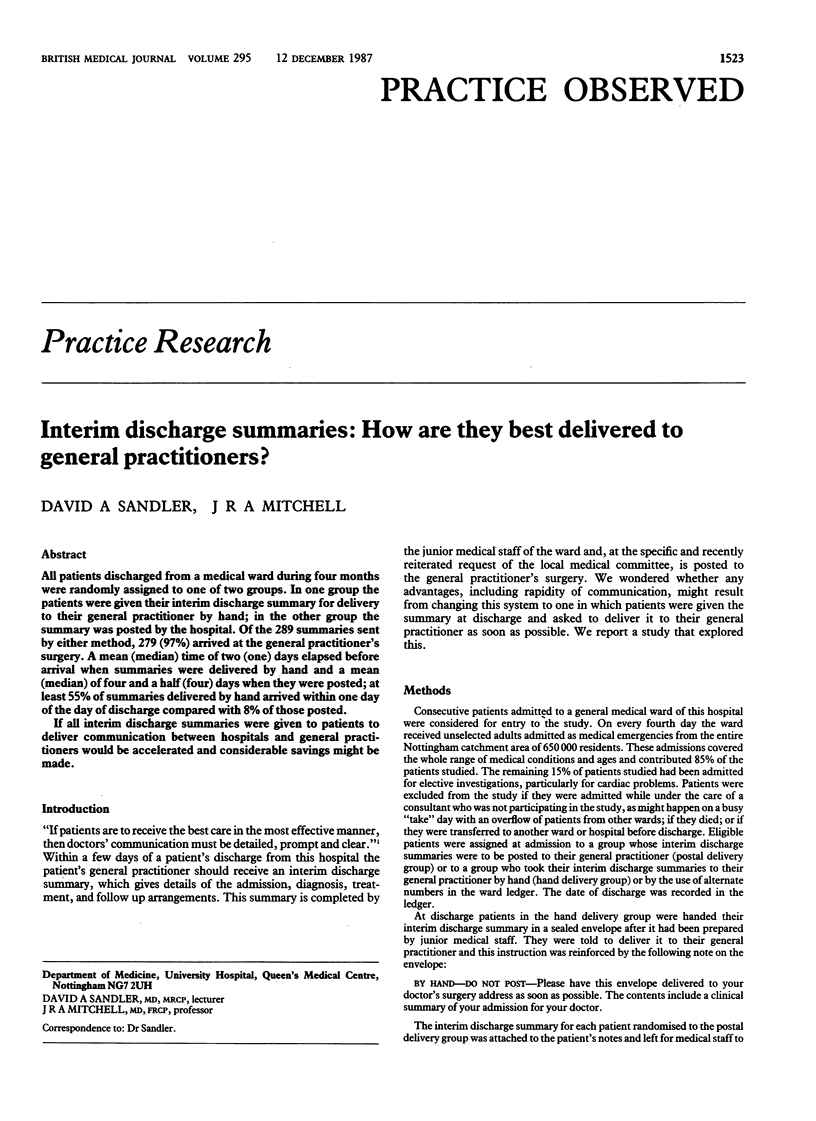Abstract
All patients discharged from a medical ward during four months were randomly assigned to one of two groups. In one group the patients were given their interim discharge summary for delivery to their general practitioner by hand; in the other group the summary was posted by the hospital. Of the 289 summaries sent by either method, 279 (97%) arrived at the general practitioner's surgery. A mean (median) time of two (one) days elapsed before arrival when summaries were delivered by hand and a mean (median) of four and a half (four) days when they were posted; at least 55% of summaries delivered by hand arrived within one day of the day of discharge compared with 8% of those posted. If all interim discharge summaries were given to patients to deliver communication between hospitals and general practitioners would be accelerated and considerable savings might be made.
Full text
PDF


Selected References
These references are in PubMed. This may not be the complete list of references from this article.
- Dover S. B., Low-Beer T. S. The initial hospital discharge note: send out with the patient or post? Health Trends. 1984 May;16(2):48–48. [PubMed] [Google Scholar]
- Tulloch A. J., Fowler G. H., McMullan J. J., Spence J. M. Hospital discharge reports: content and design. Br Med J. 1975 Nov 22;4(5994):443–446. doi: 10.1136/bmj.4.5994.443. [DOI] [PMC free article] [PubMed] [Google Scholar]


